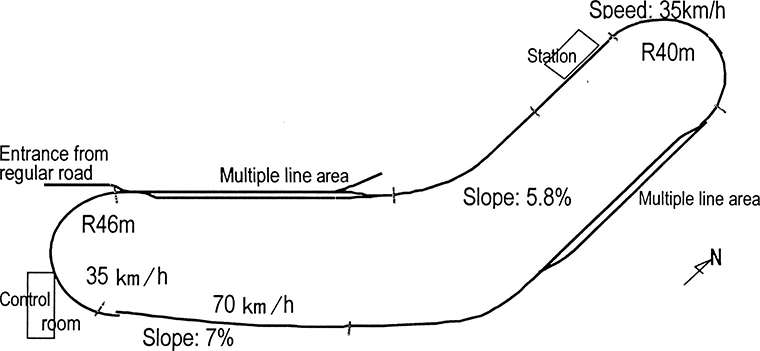Aug. 27, 1999
Intelligent Multi-mode Transit System Tests Start
New Toyota System Features Automatically Operated Train-like Buses
Tokyo―TOYOTA MOTOR CORPORATION (TMC) has decided to put its Intelligent Multi-mode Transit System (IMTS) to the test by starting trial runs on an experimental route at its Higashifuji Technical Center in Shizuoka Prefecture. IMTS is a new medium-distance, medium-volume mode of transportation that combines the strengths of railways and road systems by using train-like buses that run automatically on dedicated thoroughfares and manually on regular roads.
IMTS is TMC's answer to the needs of 21st century transportation-reducing congestion and addressing other urban mobilization issues, while helping senior citizens and other people get around freely in a convenient and economic way. It combines the speed and regularity of rail transport systems with the economy and flexibility of buses by applying the latest ITS technologies-most notably those concerning Advanced Cruise-Assist Highway Systems (AHS).
The core of the publicly-minded system comprises specialized roads that allow automatic operation of up to about six coupled buses moving in a line. But it also incorporates regular roads, on which drivers operate the vehicles much in the way they would a regular bus, allowing for selective destinations. And by simply releasing or connecting the mechanical coupling between the buses, the number of buses can be easily adjusted to adapt to changes in demand.
In pursuit of its goal to create a transportation system that shows consideration for both people and the environment, TMC has included features such as a low-floored, "stepless" bus, and has installed a newly developed, low-emission compressed natural gas (CNG) engine.
The vehicles themselves, which are based on currently mass-produced buses, can be serviced and maintained at regular bus service stations, eliminating the need for construction of specialized maintenance facilities. Another key characteristic is that because the system's operation requires neither rails nor electric power lines, construction and maintenance costs are much lower than conventional railway-based or other new transport systems.
With these benefits, potential uses of IMTS include connecting airports, major train stations or popular resorts with neighboring cities or suburban residential areas, all of which are affected by major fluctuations in demand, and providing medium-volume transportation between provincial cities.
TMC will continue to work toward perfecting IMTS through operational testing. At the same time TMC will call public attention to the tests in order to gather opinions from a variety of sources with regard to possible applications and will work toward integrating such suggestions into the list of practical uses for the IMTS system.
The IMTS Concept

The Basics of the IMTS System

- *1
- Information exchange among moving vehicles, concerning position, speed, etc.
- *2
- Control center monitors operational information on all vehicles, and gives operational directions to each vehicle
- *3
- Controls the operation of the various groups of vehicles, to ensure that multiple vehicle groups do not enter the same specified area at the same time, thus preventing collisions between vehicle groups.
Outline of Dedicated IMTS Test Operation Line






